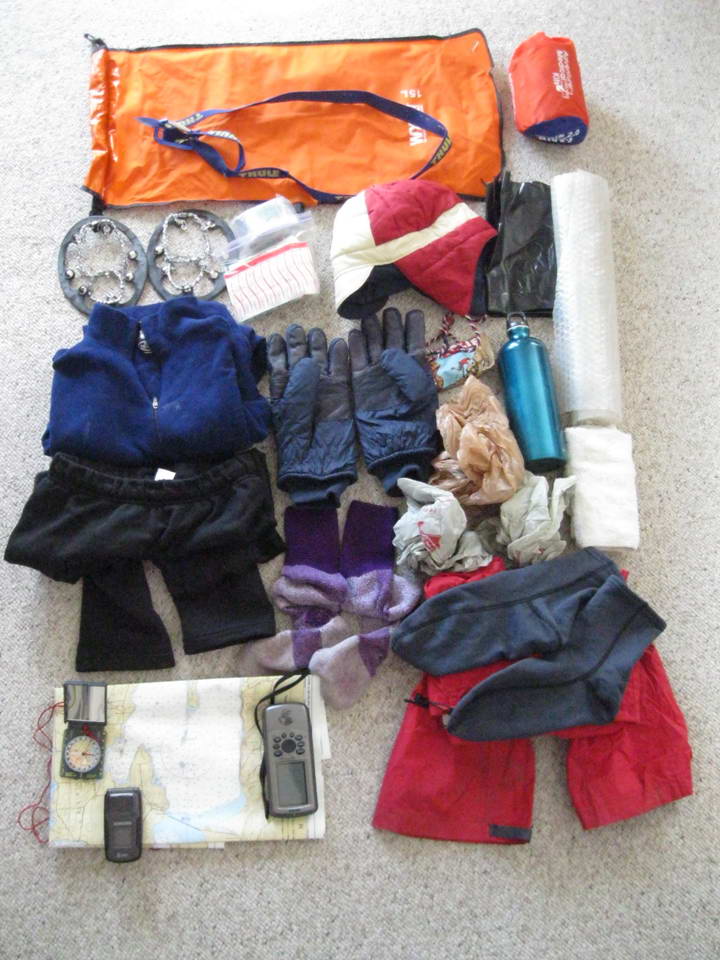
Chan with his pack
Flotation Using a Back Pack
In Europe, the standard method for providing flotation during a breakthrough is a second set of clothes in a waterproof bag. This method has been used effectively for many years.
- Flotation on your back will tip you forward. Also, if the pack is too lose it will ride up your back and provide minimal effective flotation. The pack top should be about neck level . You should use the breast strap and the waist strap. The waist strap should be snug. One or two crotch straps are used to provide effective hold down on the pack to keep it from riding up. Click here for a video showing Swedish pool training session. As you will see, if you do not have an ice shelf to hang onto you have to activly work to keep from tipping face down.
- Recently in Sweden, they have developed a method for hooking up a throw rope that will make it easier to be pull out a victim. It is also designed to make it more likely a victim who can not assist in the rescue can be retrieved with the throw rope. More information on this will be added to this page soon.
- Click here for Jouan Porsby's 2006 report on his study of backpack flotation. It is in Swedish but the pictures tell some of the story. Google translate will let you wade through the text.
Vermont skater, Chan Weller, sets his pack up using this method. He puts the clothes and other items in a dry bag and carries that in his back. I was a trip with Chan in 2013 when one of our party got wet to the waist. Having dry clothes to share avoided a cold and hasty trip to shore.
Items he wears or carries:
- helmet/goggles/sunglasses
- ice picks
- Swedish skating poles (these are designed to be effective test poles)
- whistle
- backpack with belly and chest band
- backpack hold down strap
- throw bag
Items in the dry bag:
- Dry Bag - acts as floatation
- (everything in this list will fit inside the dry bag which goes inside the backpack)
- emergency space blanket/mummy bag
- ice trekkers
- small first aid kit - band aids/gauze/suave, etc.
- dry warm hat with ear muffs
- large garbage bag - can be used as a windbreaker over outer garment
- medium sheet of small bubble wrap, rolled - useful for standing on ice while changing socks/pants
- dry winter gloves
- dry fleece shirt
- dry fleece pants
- Cliff Bar or other energy bar + Snickers bar
- water bottle
- toilet paper/paper towels
- several small grocery store type plastic bags - insert foot/new socks into bag when stepping into wet/cold skating boot
- dry socks
- wind pants
- compass
- map/chart
- GPS
- cell phone - in waterproof bag/zip lock/or other

Notes:
- The rolled seals on dry bags are not designed to hold air over long periods of time. To preserve the flotation volume you need to have enough stuff in the bag. A couple of knotted, new, plastic bags (one inside the other) probably hold air better.
- At the present we are not sure how much buoyancy/volume the bag should supply. A reasonable reference is a West Marine inshore inflatable life jacket has 25.5 lb of flotation (about 12 liters before accounting for the weight of the bag and contents). More on buoyancy.
